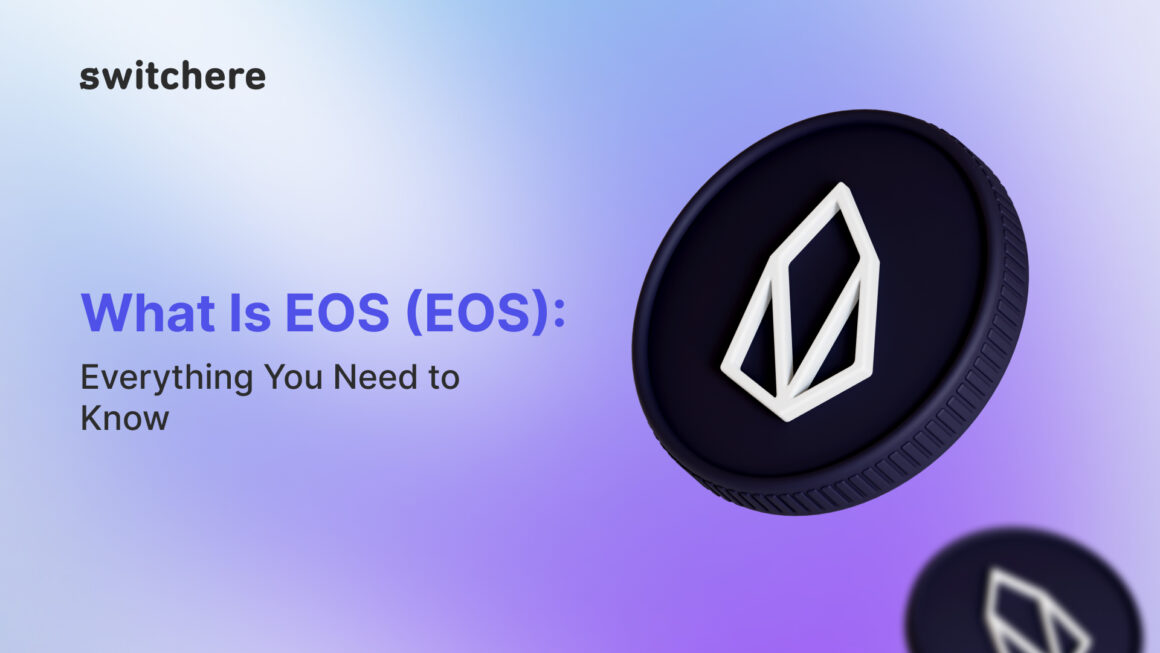At the date of writing, there are more than 1.8 million cryptocurrencies listed on the CoinMarketCap portal, whereas the total virtual currency market cap exceeds the $1 trillion mark. Nonetheless, such a shocking selection of virtual currencies may be baffling for the crypto audience, and one can easily be confused with choosing the right asset for long and/or short-term investment. Case in point, the EOS digital asset offers a perfect utility with its infinite scalability— a rapid and secure medium of exchange with feeless transactions.
What Is EOS?
By and large, EOSIO and EOS belong to one ecosystem, but they possess different functionalities. EOSIO is a cutting-edge open-source blockchain platform that guarantees a first-class and progressive transaction-layer infrastructure via smart contracts. Contrarily, the EOS Public Network is an independent blockchain that runs on Delegated Proof-of-Stake (PoS) composed on the basis of the EOSIO framework.
On EOSIO, software updates are realized by means of voting with the help of EOS virtual assets. To your knowledge, EOS is positioned as the native virtual asset on EOSIO and is utilized to pay for the costs of servicing its blockchain. In its essence, the EOS ecosystem is a perfect solution for the development and implementation of dApps.
Differentiating Features of EOS
EOSIO BFT-DPOS Consensus Algorithm
The EOSIO DLT network deploys a Delegated PoS mechanism, whereas a BFT model is functioning synchronously in spite of the fact that these maxims perform independently inside the EOSIO software infrastructure. DPoS has a robust voting mechanism to differentiate who can add the consequent block on the aforementioned DLT. Stemming from this, anybody who possesses EOS assets can assist in handling the network, and ultimately, the greater amount of tokens you have in your possession, the more plausibly you may be selected by the software.
Governance
A crystal clear voting structure allows every EOS virtual currency holder to be an integral mechanism of the EOS virtual universe. By staking EOS assets, participants vote for a certain block maker. Interestingly, EOS block makers possess greater power over network users.
Built-in Inflation
The central feature of EOS is that it does not require any transaction commissions. This means there is built-in inflation in the EOS ecosystem. Those who stake EOS digital assets provide stability to the EOS infrastructure, whereas others are involved in transacting and project development.
Impressive Transaction Processing Speed
EOS TX processing is almost instantaneous (about one mln TPS) because the DPoS algorithm does not require any confirmations. When an EOS virtual currency transaction hits the EOSIO, it goes live on the blockchain.
Flexibility
By contrast with the Ethereum infrastructure, which can be viewed as an easy target for cyber-hackers, EOS has devised and implemented a robust security infrastructure to solve the issue. The EOSIO mechanism can freeze the node that contains such a malicious TX and returns to finishing new TXs right after this issue is settled.
Use Cases
The quintessential use of EOS is staking in its DPoS consensus and taking an active part in network management. Nonetheless, EOS can be equivocally used as an instrument for capital investing and a medium of exchange.
Conclusion
As the virtual currency space keeps on conquering the fintech industry, EOS is the driving force in the crypto industry, drastically changing how we integrate with the blockchain-related ecosystem. EOS offers flexibility in creating and maintaining DApps, endless scalability horizons, and robust security architecture. All interested in virtual assets are welcome to deposit, send, receive, purchase, sell, and swap EOS with turbo mode on and at a discount price at Switchere.

Leave a Reply